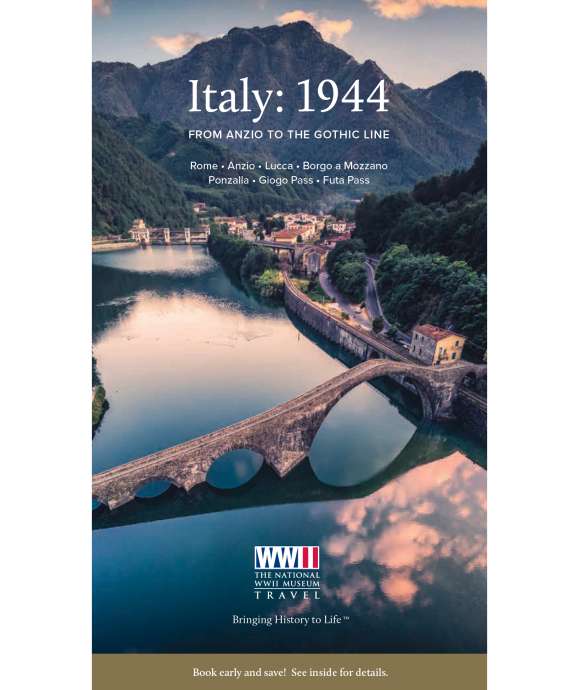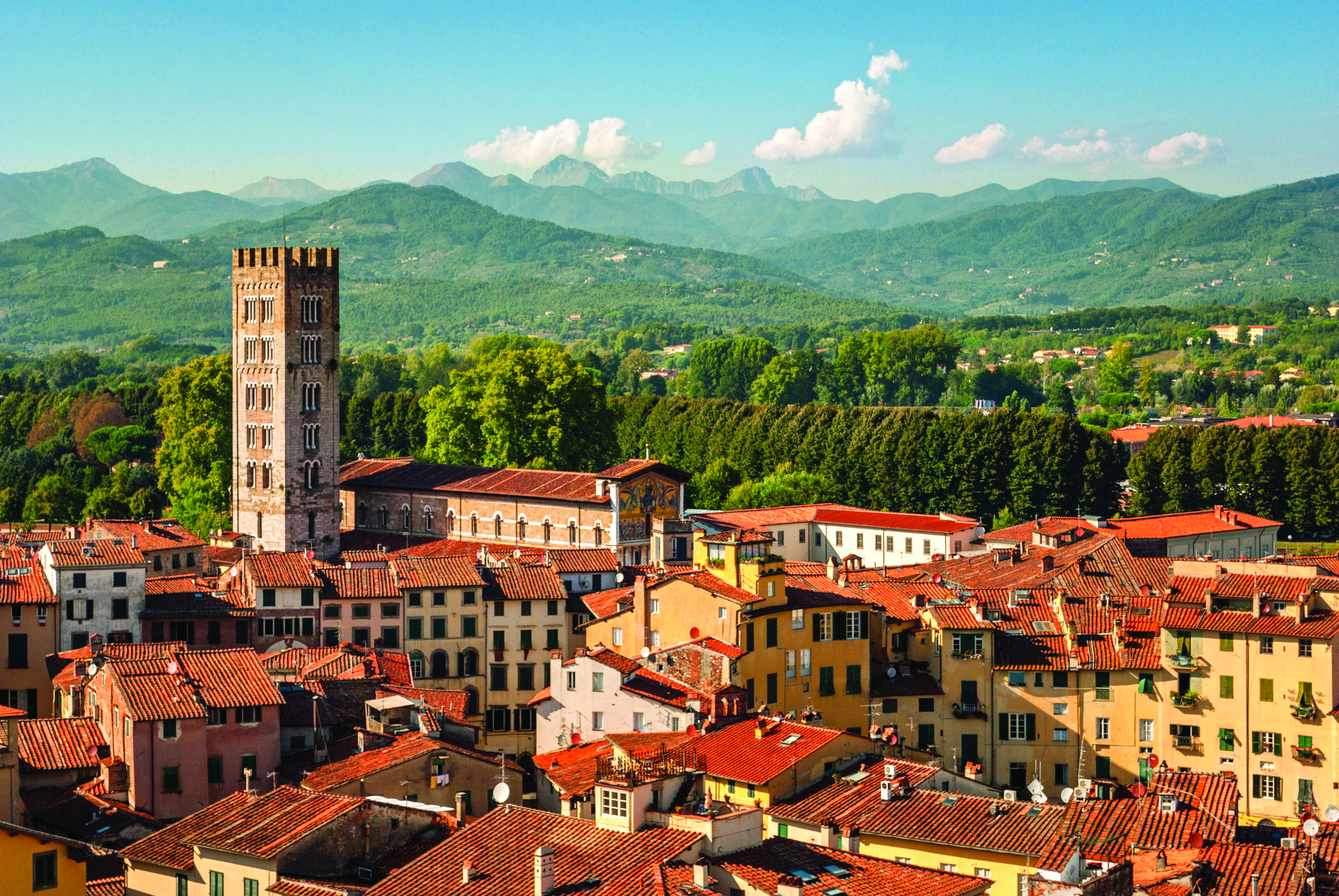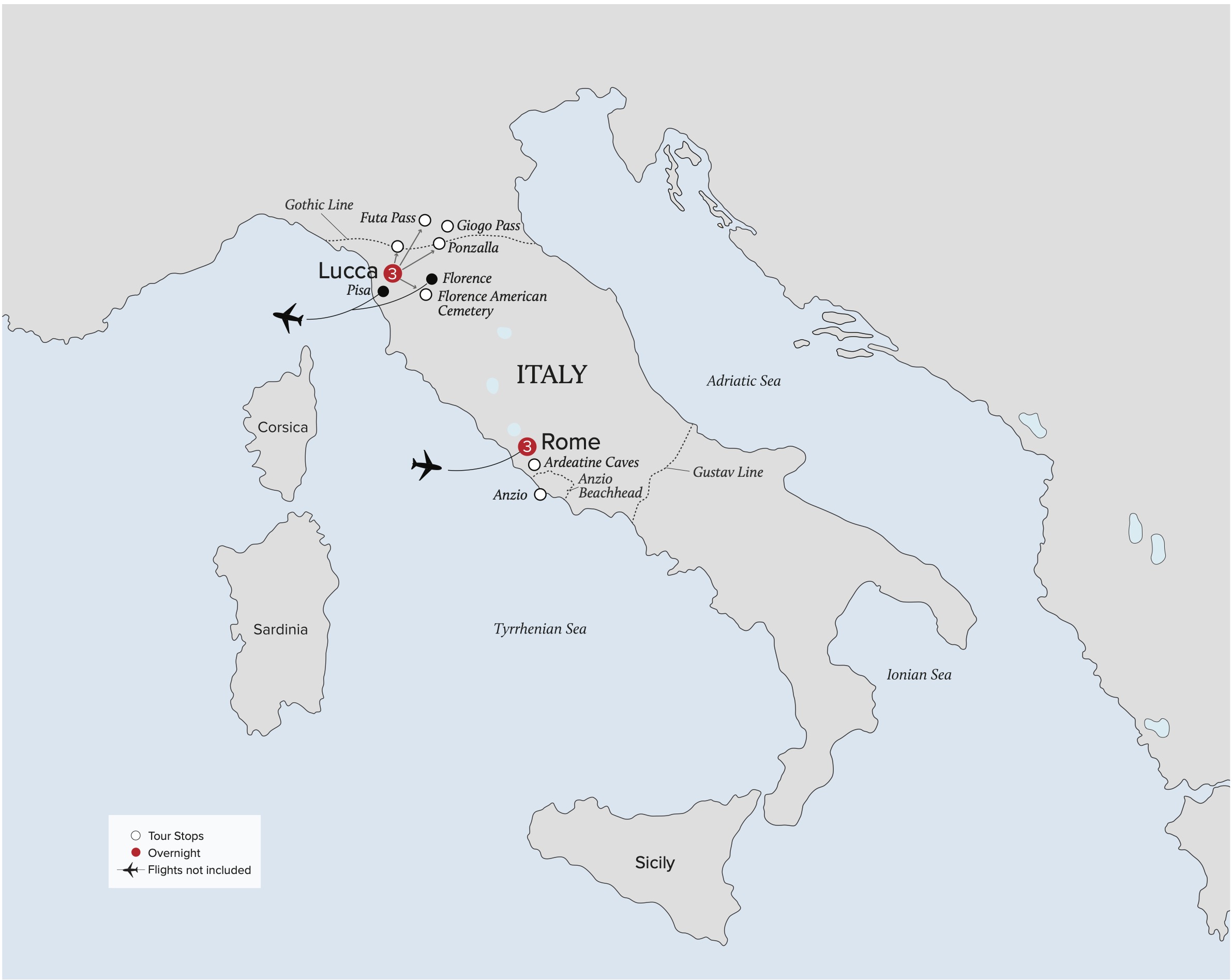About the Tour
A story of mud, mountains, and mules
The year 1944 was remarkable for the Allies. The Normandy landings had thrown the Germans into retreat and resulted in the liberation of most of France by year’s end. In the Pacific, hard-fought campaigns in the Mariana Islands yielded airfields close enough to Japan to support continuous B-29 raids on the Japanese home islands. Lost in the middle of these decisive events was the Italian campaign. The fighting in Italy after the liberation of Rome on June 4, 1944, has become a footnote in most histories of the war. This tour brings those stories back to life.

Download the Brochure
Download the official Italy: 1944 brochure for a full listing of inclusions, accommodations, and other useful information.
Summary Itinerary
Day 1
Arrive Rome
Arrive in Rome–Fiumicino International Airport (FCO) / Transfer to the Rose Garden Palace Hotel / Driving tour of Rome (sites include the HQ German Command in Via Veneto; Porta Maggiore gate; Mussolini’s residence, the Villa Torlonia; the Villa Wolkonsky (German Embassy during WWII); and more / Welcome Reception & Dinner
Accommodations: Rose Garden Palace Hotel (R, D)
Day 2
Anzio
Nettuno / Anzio Beachhead Museum / Caves of Aprilia / Sicily-Rome American Cemetery
Accommodations: Rose Garden Palace Hotel (B, L)
Day 3
Rome
Walking tour of Via Rasella / Ardeatine Caves / Lunch on own in Jewish Quarter / Guided tour of the Roman Colosseum / Farewell to Rome dinner with the group
Accommodations: Rose Garden Palace Hotel (B, D)
Day 4
Florence American Cemetery
Transfer to Tuscany / Group Lunch at Castello Vicchiomaggio / Reflect at the Florence American Cemetery / Tablets of the Missing / Evening at leisure
Accommodations: Grand Universe Lucca, Autograph Collection (B, L)
Day 5
Giogo Pass
Museo Gotica in Ponzalla / Group lunch at Il Giogo Restaurant / Giogo Pass / Futa Pass German Cemetery / Evening at leisure in Lucca
Accommodations: Grand Universe Lucca, Autograph Collection (B, L)
Day 6
The Gothic Line
Borgo a Mozzano / Devil's Bridge / Walking tour of Lucca / Farewell Dinner
Accommodations: Grand Universe Lucca, Autograph Collection (B, D)
Day 7
Flights Home from Florence or Pisa
After breakfast, transfer to Florence Peretola Airport (FLR) or the Pisa International Airport (PSA) for your independently scheduled flight home
(B)
Program Inclusions
- Full-time logistical Tour Manager
- Expert local battlefield guides
- Roundtrip Airport Transfers(when arriving & departing on scheduled group tour dates)
- 3-nights in Rome at the Rose Garden Palace Hotel
- 3-nights in Lucca at Grand Universe Lucca, Autograph Collection
- Private, first-class, air-conditioned motor coach transportation
- VIP access to sites not offered on other tours
- Video oral history presentations from the Museum's collection
- Included gratuities to guides, drivers, porters, and servers
- Personal listening devices on all included touring
- 6 breakfasts, 3 lunches, 1 reception, and 3 dinners
- Beer, wine, and soft drinks with included lunches and dinners
- Informative map book including useful battlefield maps and archival images to be used throughout your journey
- Personalized luggage tags and customized name badge
Destination Map
For tour questions or for more information, the Travel Sales Team is available
Monday – Friday, 9:00 am – 5:00 pm Central.
Call: 1-877-813-3329 x 257
Email: travel@nationalww2museum.org

